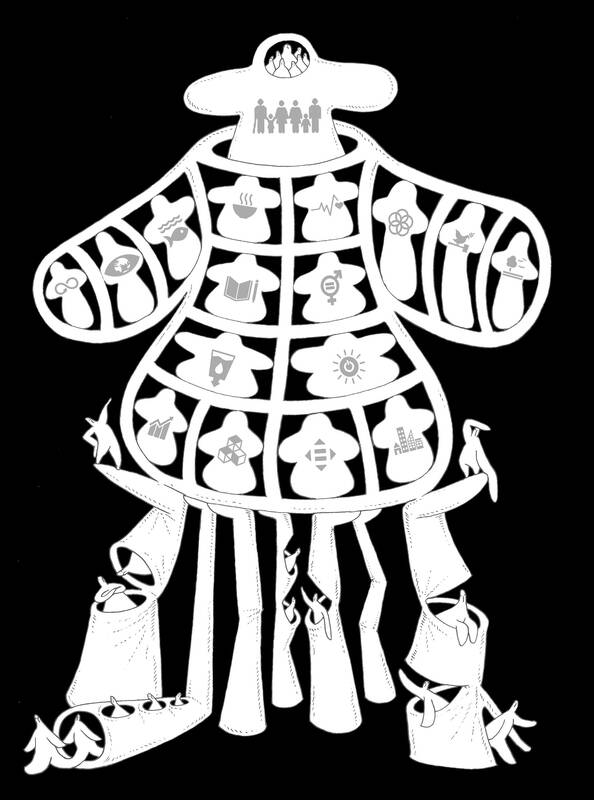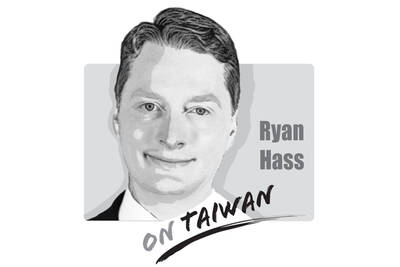The world is losing a winnable battle. UN Secretary-General Antonio Guterres said that the 2030 Sustainable Development Goals (SDGs) are on the verge of becoming “the epitaph for a world that might have been.” Can the patient be resuscitated?
Decisions made in the coming days would have a significant bearing on the answer. On Saturday, governments are to announce their funding pledges for the International Development Association (IDA), the branch of the World Bank Group that delivers finance to the world’s poorest countries (with annual per capita incomes below US$1,315). IDA replenishment happens every three years, which means that commitments made today span the critical investment period for salvaging the SDGs. Unfortunately, it is not looking good, with several key donors failing to pull their weight.
The 78 countries covered by the IDA are where the battle for the SDGs would be won or lost. Home to 500 million people surviving on less than US$2.15 per day, they account for about 70 percent of extreme poverty and more than 90 percent of world hunger. Worse, it is children who are on the front lines. In a recent ODI report, my coauthors and I estimate that about 257 million children in IDA-eligible countries are growing up hungry, with devastating consequences for their health and educational prospects.

Illustration: Mountain People
Recent setbacks have compounded already severe challenges, triggering major reversals. After being hit hard by the COVID-19 pandemic, IDA countries have been buffeted by post-pandemic economic slowdowns, rising food prices and surging public debt. More than half are falling further behind rich countries as global inequalities widen. Poverty reduction has slowed from an already inadequate pace and progress against hunger has stalled. Debt service is crowding out vital investment, with repayments now outweighing spending on health and basic education.
Against this bleak backdrop, access to affordable development finance has been shrinking. Real (inflation-adjusted) financial transfers to Africa from donors have fallen, and rising real interest rates have priced most IDA countries out of sovereign bond markets (or otherwise subjected them to punitively high borrowing costs).
The IDA is the single most powerful multilateral financial weapon in the anti-poverty arsenal. In the last fiscal year, it provided US$31 billion in support for member countries and was by far the largest source of development finance for Africa, which benefits from zero-interest grants, concessional loans repayable over 30 to 40 years, or both.
Such finance is an SDG lifeline, because it is overwhelmingly directed to areas with demonstrated benefits for the poor, such as social protection, investments in child and maternal health, and education. With a generous replenishment, the IDA could help lift millions out of extreme poverty, extend opportunities for improved health and learning, and support adaptation to climate change.
Moreover, for donors seeking value for money, the IDA has a unique advantage: Every US$1 received can deliver US$3.50. The IDA can leverage the World Bank’s AAA credit rating to secure low-interest financing by issuing bonds and lending the proceeds to developing countries. When donors deliver funds through bilateral aid programs or global health funds, the money that comes out mirrors the money that goes in. However, the IDA offers a much bigger bang for the buck.
The IDA also mitigates damaging international-aid practices. Currently, only about 8 percent of poverty-related development assistance is delivered through government budgets. The rest arrives through project funds controlled by donors, leading to fragmentation, weak coordination and high transaction costs for governments. Hence, Ethiopia had to manage 454 aid transactions for agriculture alone in 2021. By contrast, the IDA delivers support through national budgets for nationally owned programs, which is why governments across Africa strongly support it.
The World Bank has rightly made the case for a major IDA increase. Last year, World Bank president Ajay Banga called on donors to provide more than US$120 billion, which would make this replenishment “the biggest of all time.” Sadly, that ambition has faded, with current pledges implying a replenishment of less than US$105 billion — smaller than the previous one, in real terms.
While US President Joe Biden’s administration has announced an increased IDA commitment, and several smaller countries and new donors have also stepped up, some major G7 economies have stepped back. Last year, French President Emmanuel Macron hosted a summit aimed at creating a new global financial pact to tackle poverty and the climate crisis; but this year, he is set to cut France’s contribution to the IDA.
Equally disappointing is the UK, which was among the largest contributors to the IDA in the decade ending in 2022 — a legacy of former British prime minister Gordon Brown’s leadership. The picture changed dramatically in the last IDA replenishment, when the UK contribution was halved as Conservative governments took a wrecking ball to the aid budget.
This year’s replenishment gives the new Labour government an opportunity to start rebuilding Britain’s reputation as a “development superpower.” British Secretary of State for Foreign, Commonwealth and Development Affairs David Lammy has promised a new era in which the UK would “use realist means to pursue progressive ends.” Reversing the Conservatives’ cuts with a 54 percent increase to the UK contribution (representing a commitment of US$2.2 billion) would certainly meet those criteria. And yet, the Treasury wants to cap any additional contribution at 20 to 40 percent.
That would be a travesty. While the Treasury is correct to say that it inherited a poisoned chalice of unsustainable public finance from its Conservative predecessors, it is wrong to suggest that the UK cannot afford to send a positive signal in the interest of international cooperation and its own soft power.
To make matters worse, the government has effectively shelved long-standing aid commitments by maintaining previous governments’ policy of subjecting them to impractical and implausible fiscal tests, one of which is to achieve a budget surplus (something that has happened only four times since 1971). There is nothing realistic or progressive about using implausible goals as a pretext to turn one’s back on the world’s poor. The UK should fully restore the IDA cuts made by the Conservative government.
The IDA might not be perfect, but it is the best tool that we have for restoring the hope that the SDGs once instilled. Governments should use it.
Kevin Watkins, a former CEO of Save the Children UK, is a visiting professor at the Firoz Lalji Institute for Africa at the London School of Economics and Political Science.
Copyright: Project Syndicate

China has not been a top-tier issue for much of the second Trump administration. Instead, Trump has focused considerable energy on Ukraine, Israel, Iran, and defending America’s borders. At home, Trump has been busy passing an overhaul to America’s tax system, deporting unlawful immigrants, and targeting his political enemies. More recently, he has been consumed by the fallout of a political scandal involving his past relationship with a disgraced sex offender. When the administration has focused on China, there has not been a consistent throughline in its approach or its public statements. This lack of overarching narrative likely reflects a combination
Father’s Day, as celebrated around the world, has its roots in the early 20th century US. In 1910, the state of Washington marked the world’s first official Father’s Day. Later, in 1972, then-US president Richard Nixon signed a proclamation establishing the third Sunday of June as a national holiday honoring fathers. Many countries have since followed suit, adopting the same date. In Taiwan, the celebration takes a different form — both in timing and meaning. Taiwan’s Father’s Day falls on Aug. 8, a date chosen not for historical events, but for the beauty of language. In Mandarin, “eight eight” is pronounced
US President Donald Trump’s alleged request that Taiwanese President William Lai (賴清德) not stop in New York while traveling to three of Taiwan’s diplomatic allies, after his administration also rescheduled a visit to Washington by the minister of national defense, sets an unwise precedent and risks locking the US into a trajectory of either direct conflict with the People’s Republic of China (PRC) or capitulation to it over Taiwan. Taiwanese authorities have said that no plans to request a stopover in the US had been submitted to Washington, but Trump shared a direct call with Chinese President Xi Jinping (習近平)
It is difficult to think of an issue that has monopolized political commentary as intensely as the recall movement and the autopsy of the July 26 failures. These commentaries have come from diverse sources within Taiwan and abroad, from local Taiwanese members of the public and academics, foreign academics resident in Taiwan, and overseas Taiwanese working in US universities. There is a lack of consensus that Taiwan’s democracy is either dying in ashes or has become a phoenix rising from the ashes, nurtured into existence by civic groups and rational voters. There are narratives of extreme polarization and an alarming